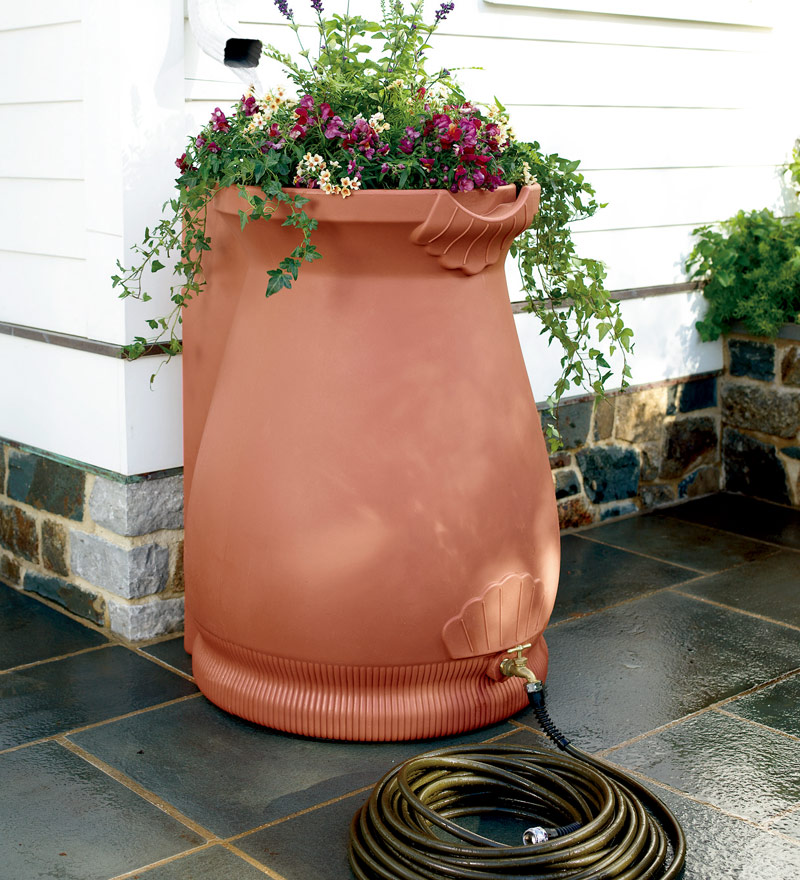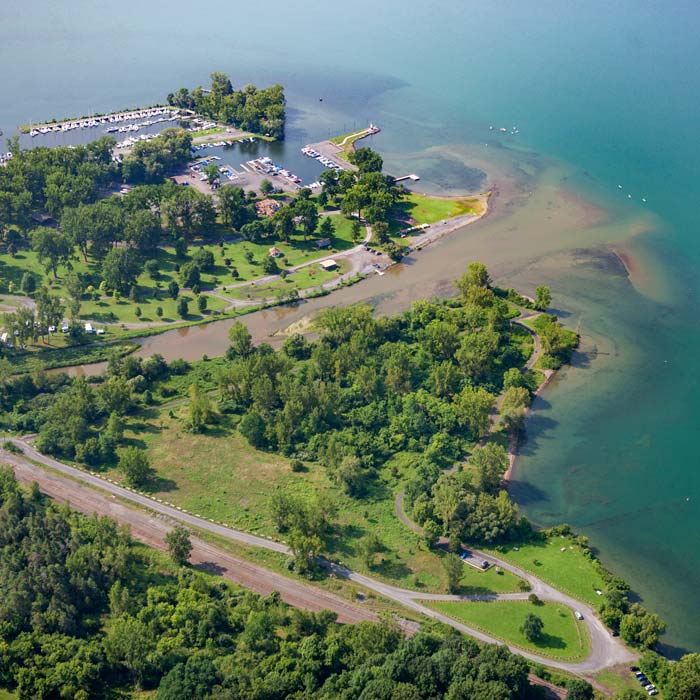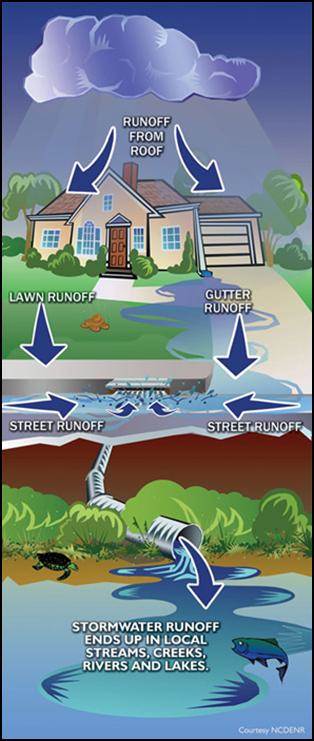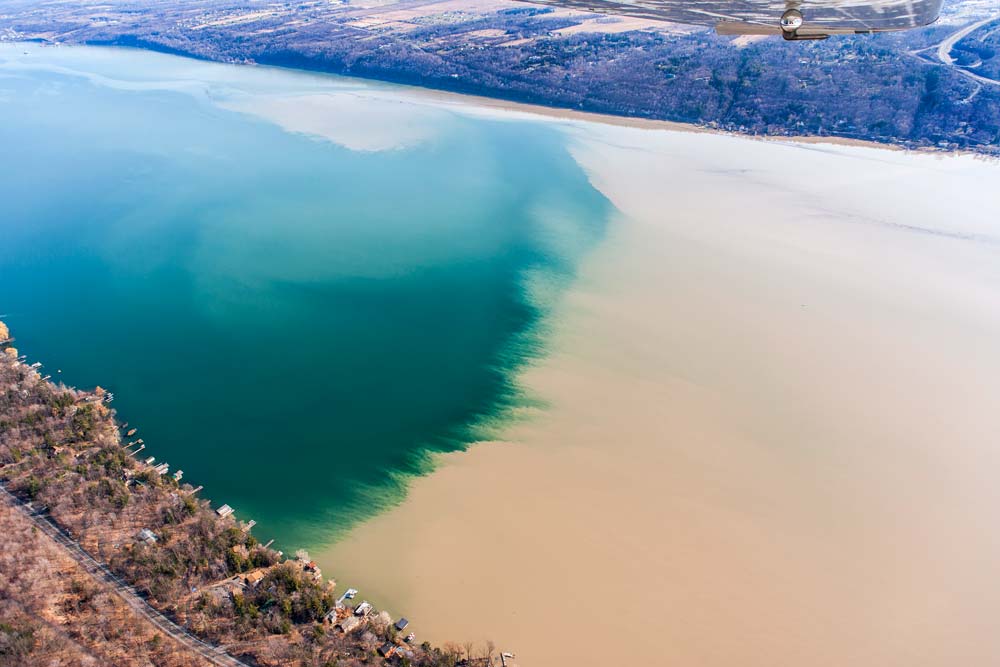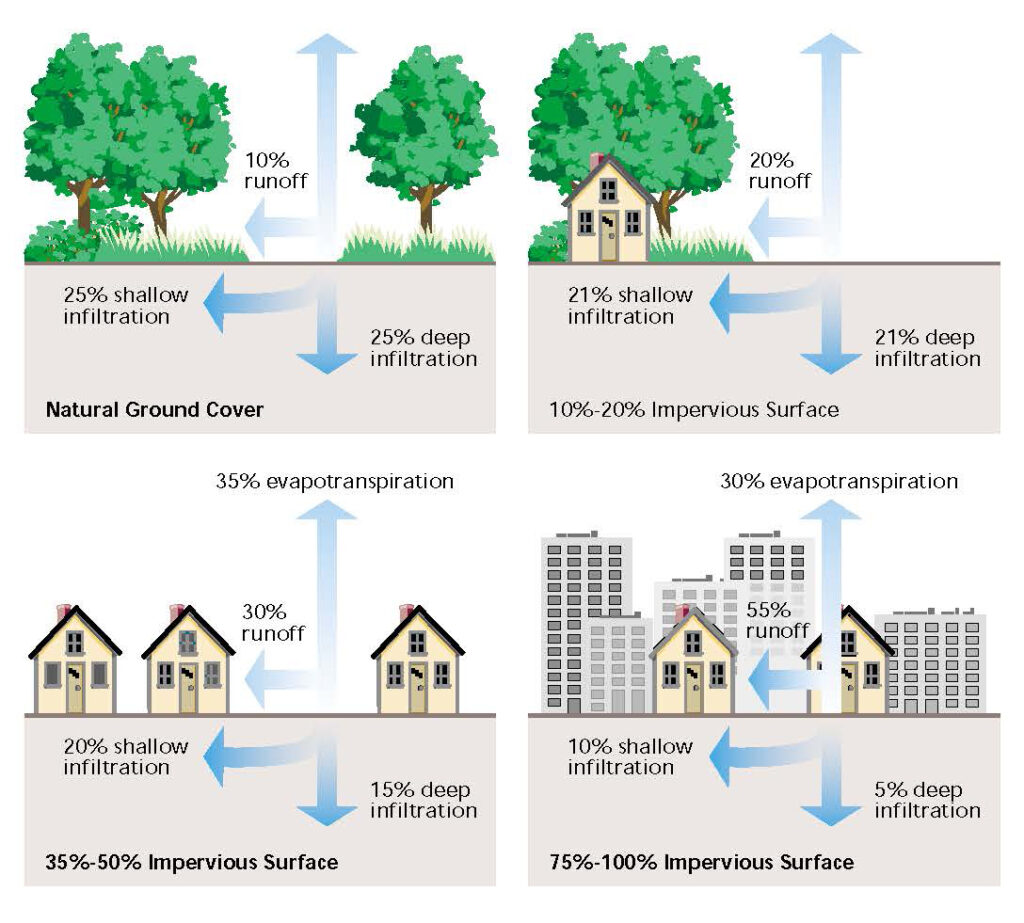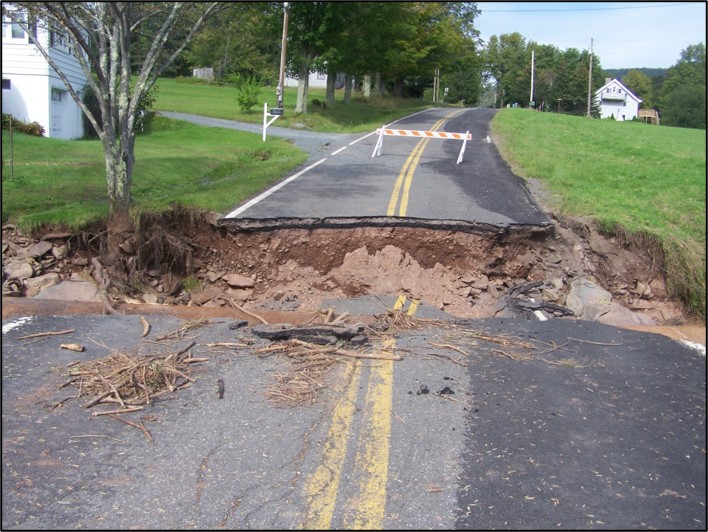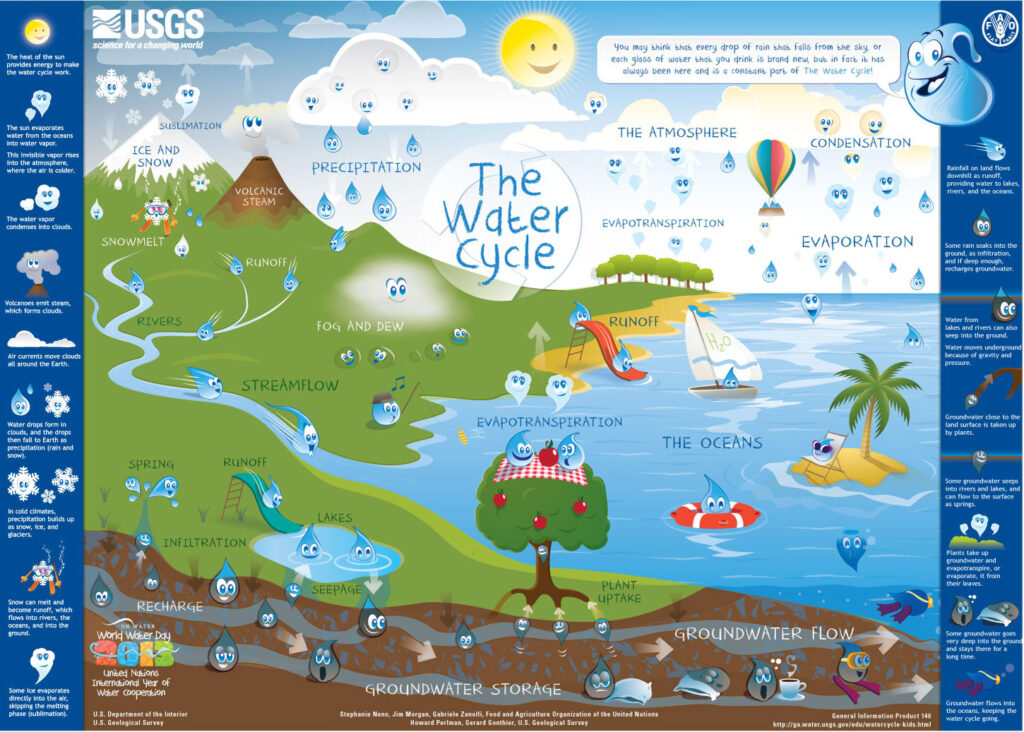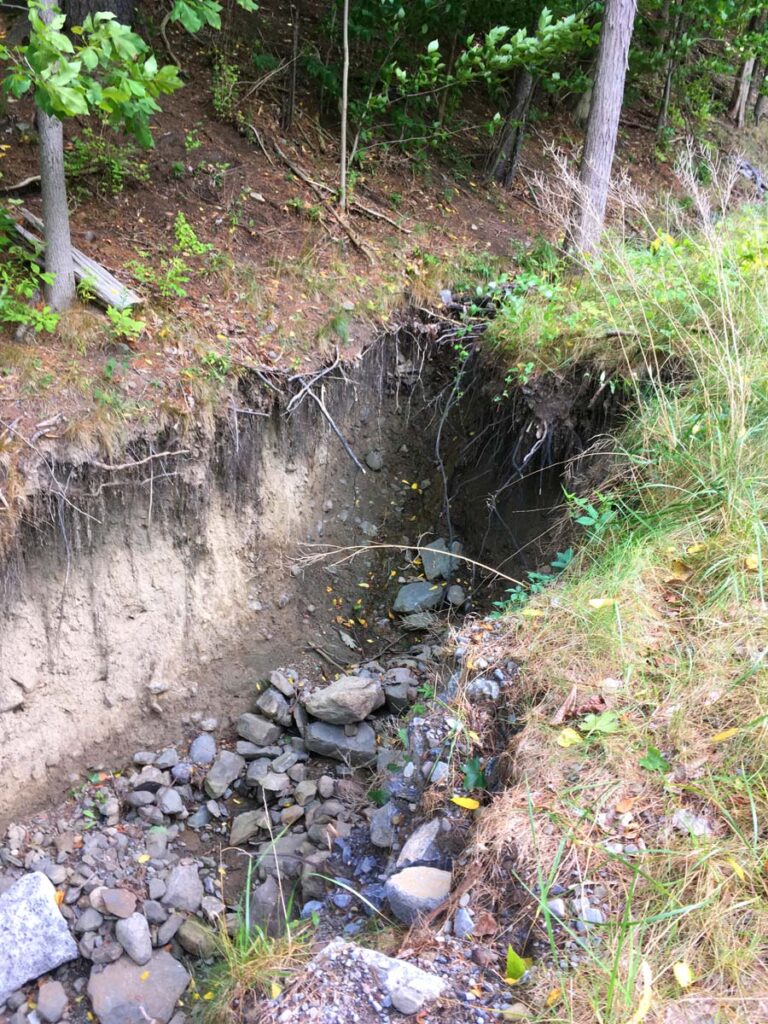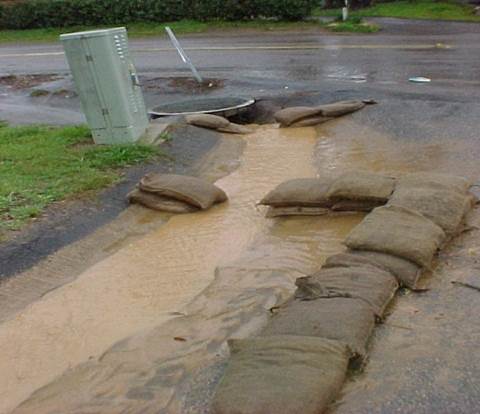Water Quality
Stormwater runoff is rainwater or snowmelt that doesn’t soak into the ground. Instead, it flows across the land surface, picking up pollutants along the way before entering local water bodies. As it travels across the land and impervious surfaces (roofs, driveways, sidewalks, roads), stormwater carries trash and pollutants such as sediment, nutrients, pesticides, bacteria, oil, and gasoline to local lakes, streams, rivers, and wetlands. To see how this happens, see the illustration below!
These pollutants can make water unsafe for drinking and water-based recreation and can also negatively impact fish and their aquatic habitat. People and animals may become sick from drinking the water or from eating the fish from contaminated lakes, rivers, and streams.
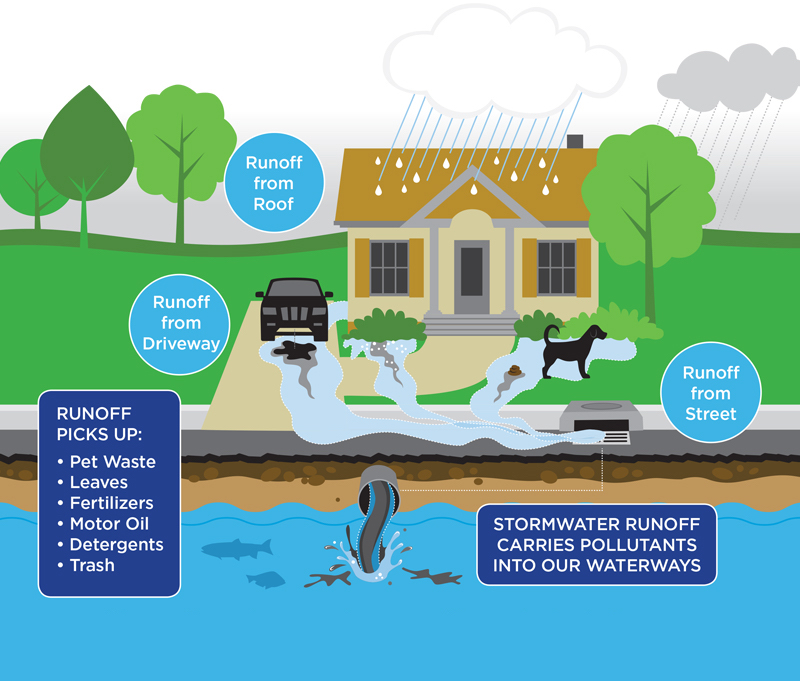
Flooding
Stormwater runoff contributes to flooding and can lead to expensive repairs for municipalities and homeowners. In New York and New England, the frequency of 2-inch rainfall events has increased since the 1950s and storms once considered a 1 in 100-year event have become more frequent. Such storms are now likely to occur almost twice as often. The more we can do to hold water back and let it infiltrate into the ground, the more flood resilient we’ll be.
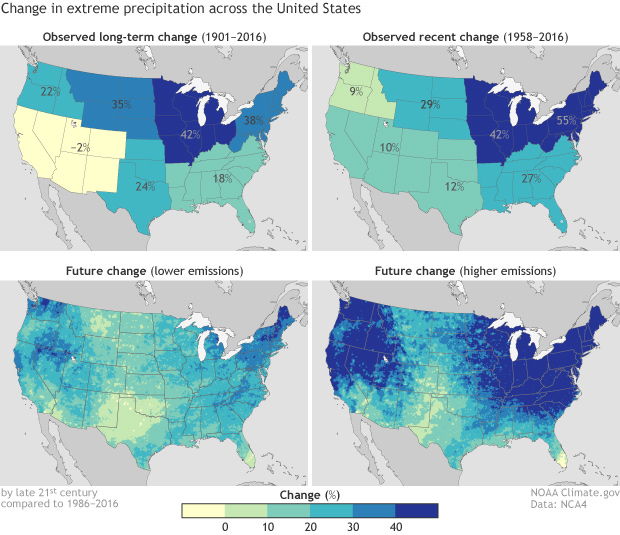
Drought
Installing green infrastructure, such as bioretention areas and permeable paving can be helpful during times of drought. When a storm does occur, rain falling on roofs, parking lots, streets, and other hard surfaces can be captured by these practices and help replenish local groundwater. These infiltration-based practices can allow rainwater to slowly soak into the ground rather than running off.
On individual properties, rainwater harvesting techniques such as rain barrels and cisterns can reduce demand for potable (drinking) water. The stored water is then used to irrigate landscaping and lawns.
